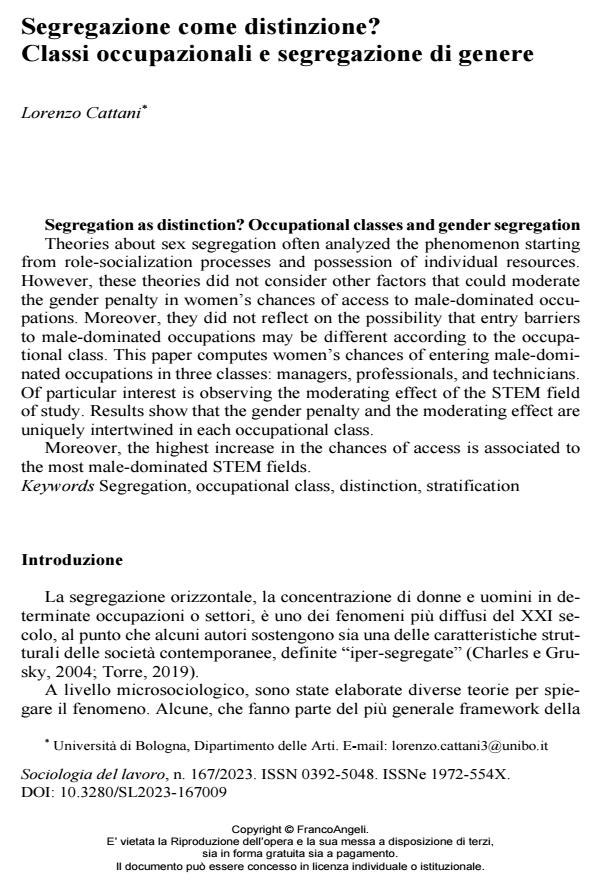Segregation as distinction? Occupational classes and gender segregation
Journal title SOCIOLOGIA DEL LAVORO
Author/s Lorenzo Cattani
Publishing Year 2024 Issue 2023/167
Language Italian Pages 32 P. 189-220 File size 403 KB
DOI 10.3280/SL2023-167009
DOI is like a bar code for intellectual property: to have more infomation
click here
Below, you can see the article first page
If you want to buy this article in PDF format, you can do it, following the instructions to buy download credits

FrancoAngeli is member of Publishers International Linking Association, Inc (PILA), a not-for-profit association which run the CrossRef service enabling links to and from online scholarly content.
Theories about sex segregation often analyzed the phenomenon starting from role-socialization processes and possession of individual resources. However, these theories did not consider other factors that could moderate the gender penalty in women’s chances of access to male-dominated occupations. Moreover, they did not reflect on the possibility that entry barriers to male-dominated occupations may be different according to the occupational class. This paper computes women’s chances of entering male-dominated occupations in three classes: managers, professionals, and technicians. Of particular interest is observing the moderating effect of the STEM field of study. Results show that the gender penalty and the moderating effect are uniquely intertwined in each occupational class. Moreover, the highest increase in the chances of access is associat-ed to the most male-dominated STEM fields.
Keywords: Segregation, occupational class, distinction, stratification
Lorenzo Cattani, Segregazione come distinzione? Classi occupazionali e segregazione di genere in "SOCIOLOGIA DEL LAVORO " 167/2023, pp 189-220, DOI: 10.3280/SL2023-167009